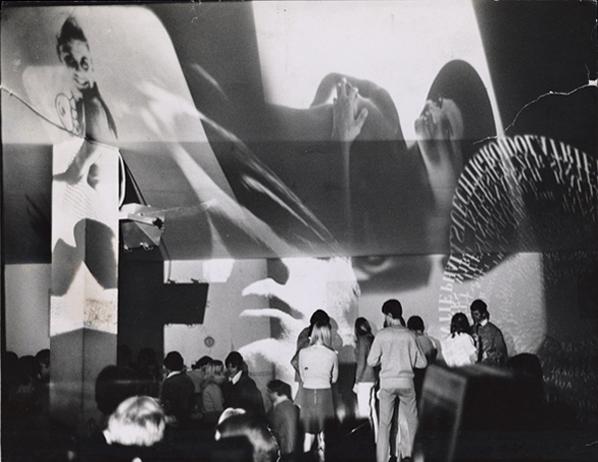
Photo: K. Håkan Nilsson.
This past Saturday night, guests at the Guggenheim revisited the underground Düsseldorf club Creamcheese, an experimental artsy discotheque that opened in 1967 and hosted performances and video shows almost until the 1980s. It’s peculiar name was inspired by a character—Suzy Creamcheese—found on an LP from Frank Zappa’s Mother of Invention.
The evening began with a presentation by scholar Tiziana Caianiello, on the cultural importance of Creamcheese (or, to some, “the” Creamcheese). A rather obscure part of the art-music nexus, Creamcheese was founded by ZERO artist Günther Uecker and included many artworks by his fellow artists including, Adolf Luther, Gerhard Richter, Daniel Spoerri, and Heinz Mack (who designed the bar). Creamcheese became known for its progressive music as well as a space that blurred the lines of art, music, performance, and film. It’s easy to say that if it were 1960 right now, Creamcheese would definitely make our top 20 list of the hottest art world hangouts (“See the 20 Hottest Art World Hangouts of 2014“).
Proceeding Caianiello’s presentation, composer-curator Zach Layton and composer-conceptual artist R. Luke Dubois gave a talk on the historical significance of German electronic music. During the peak of Creamcheese’s popularity and around the end of ZERO, an authentic German sound was birthed, ushering a new era of bands including Neu!, Kluster, Can, Tangerine Dream, and, perhaps the most popular in the US, Kraftwerk. The connection between the artistic movement ZERO and the music lies in the minimalist approach to the respective art forms.
Afterwards guests enjoyed a playlist curated by Layton. The tracks included songs played at Creamcheese, songs from bands that performed at the venue (including Pink floyd), and other German experimental music from the era. A live performance by Layton and Dubois ensued, with the duo using modular synthesizers, creating sonic sounds that reverberated throughout the museum’s famous rotunda.
Later, another live performance by Brooklyn-based psychedelic rock band, Oneida, closed the night.
The question remains, though, how to preserve the physicality of these cultural spaces, when their life only spans a decade at most.
The goal of the night? Layton said, “To convey the spirit of [Creamcheese] but in a way that speaks to a contemporary audience.” A difficult execution indeed but nonetheless a valiant one.